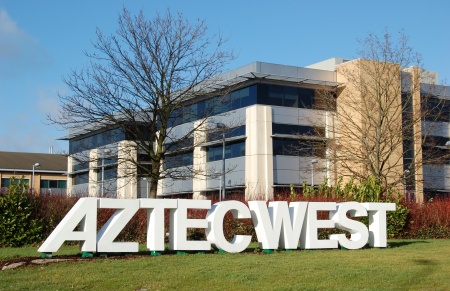A Guide to Office Space in Bristol
Businesses in Bristol have an auspicious location — within easy reach of London by train (just an hour and 45 minutes to Paddington from Bristol Temple Meads) and well-connected by road, with the intersection of the M4 and M5 motorways just north of the city. From a recruitment point of view, the city is also well-served by a continuous stream of talent from both Bristol University and the University of the West of England, as well as Bath Uni and beyond.
Bristol’s office landscape is huge and diverse and spread throughout the city but the larger office developments and spaces are focused around a few core areas. These hotspots provide the best opportunities for companies seeking to leverage existing infrastructure and make the best of opportunities for local collaboration.
Before we look at each in turn though, let’s break down Bristol’s office spaces in numbers.
_ _ _ _ _ _ _ _ _ _ _ _ _ _ _ _ _ _ _ _ _ _ _ _ _ _ _ _ _ _ _ _ _ _ _ _ _ _ _ _ _ _ _ _ _ _ _ _ _
Bristol Office Space in Numbers
As one of the most competitive economies outside London, office space in Bristol is in high demand, and though this has led to significant new development and investment (which we’ll see in a bit), it has also created high rents and low vacancy rates. The numbers break down as follows…
Office supply: 450,000 ft2
Grade A office supply: less than 100,000 ft2
Vacancy rate: 3.6 percent
Typical rents: £300 – £400 per month, per person
Top rents: ~£35 per ft2
_ _ _ _ _ _ _ _ _ _ _ _ _ _ _ _ _ _ _ _ _ _ _ _ _ _ _ _ _ _ _ _ _ _ _ _ _ _ _ _ _ _ _ _ _ _ _ _ _
Wapping Wharf: Dockside Offices at ‘CARGO Work’
Once a hub of global trade, Wapping Wharf fell into disrepair as dockyard commerce declined during the fifties and sixties. Then, as millions of pounds were poured into regenerating the harbourside during the eighties, this small site overlooking the harbourside found a new lease of life.

CARGO, the developers who helped create a stacked shipping container restaurant and retail complex on site, have now released plans for the development of a five-storey workspace constructed out of 90 converted containers within the stone walls of a disused warehouse.
This will form a new contemporary unique workspace with a mixture of indoor and outdoor spaces — an atrium, decking, and room for around 250 people across several different businesses to both work separately and collaborate.
Residents will benefit from ground floor parking, outdoor seating, bike storage, and a prime location on Spike Island, which is also home to several other coworking and office spaces.
Temple Quay: Bristol’s Fresh New Business District
Bristol’s swankiest business district yet is being built around the railway terminus at Temple Meads. The equivalent of London’s Canary Wharf or King’s Cross, this new urban quarter offers premium office space at one of the most connected areas of Bristol.

By Derek Harper, CC BY-SA 2.0, Link
With water taxis running up and down the harbour, busses to various destinations throughout the city, including the airport, as well as a network of crisscrossing cycle routes, Temple Quay is at the heart of Bristol’s transport networks. And that’s not to mention the national rail hub of Temple Meads Station, which includes regular trains direct to London Paddington.
So important is this hub, that is is the main focus of Bristol’s investment in attracting new enterprise to the city. £21m has been allotted to improving access in the area with roadworks and bridges, £11m to superfast broadband, and £200m for the citywide MetroBus scheme, which will further connect Temple Quay with the rest of the city.
Over 3,000 people have already come to work for the 350 businesses in this Enterprise Zone. This includes top 50 law firm Burges Salmon, BT, IBM, Osborne Clarke, Canada Life and HSBC. In total, the council is aiming to create 22,000 jobs and is offering relaxed planning rules and an improved public realm to lure in new businesses.
Old buildings, like the former Royal Mail sorting office which overshadows the station, are being torn down. And in their place, shiny waterfront office blocks like 3 Glass Wharf are being built to accommodate the new wave of enterprise.
Finzel’s Reach: Harbourside Neighbourhood at the Heart of Bristol
A short walk along the famous floating harbour from Temple Quay — or a five-minute waterbus, ride — is Finzel’s reach, a former industrial area opposite one of Bristol’s biggest green spaces: Castle Park.

This was once home to one of the largest sugar refineries in England but is now being repurposed to provide nearly 400 apartments and 300,000 ft2 of office space within easy reach of Temple Meads station and the popular shopping areas of Cabot Circus and St Nicholas Market.
Derelict buildings, like the former Tramways Generating Station which powered the 20th-century tram network, are being turned into office accommodation, and shiny new blocks are being erected alongside. These include the £50 million Aurora building, which will provide Grade A office accommodation, and has been awarded an ‘outstanding’ BREEAM accreditation for its sustainability credentials.
As the work continues, residents and businesses have already begun to move in — with Channel 4 recently announcing that Finzel’s Reach is the chosen location of its new creative hub.
Aztec West: not your Average out-of-town Business Park
Despite its ancient Central American namesake, Aztec West is one of the most forward-looking places in Bristol. This tech-focused science and business park was given the name for its reference to the ‘A to Z of Technology’.

The business park, which is one of Britain’s most successful, sits seven miles out from the centre on the northern fringes of the city. With wide roadways and landscaped grounds, the park could be mistaken for many others across the UK, but is set apart by a unique architectural approach — Aztec West is famous for its postmodern buildings, several of which have recently been listed by Historic England in recognition of their distinct style.
Just a stones throw from the M4/M5 interchange, Aztec West’s location offers significant advantages — circumventing city traffic and providing a close connection to England’s motorway network. From the city, there is a regular bus service — including the newly launched M1 Metrobus which calls at Cribb’s Causeway — and an extensive network of cycle paths.
Although Aztec West is already home to over 150 companies — including RBS, Orange, HSBC, Atkins, and Allianz — offices are regularly available, and additional land remains ready for development.






